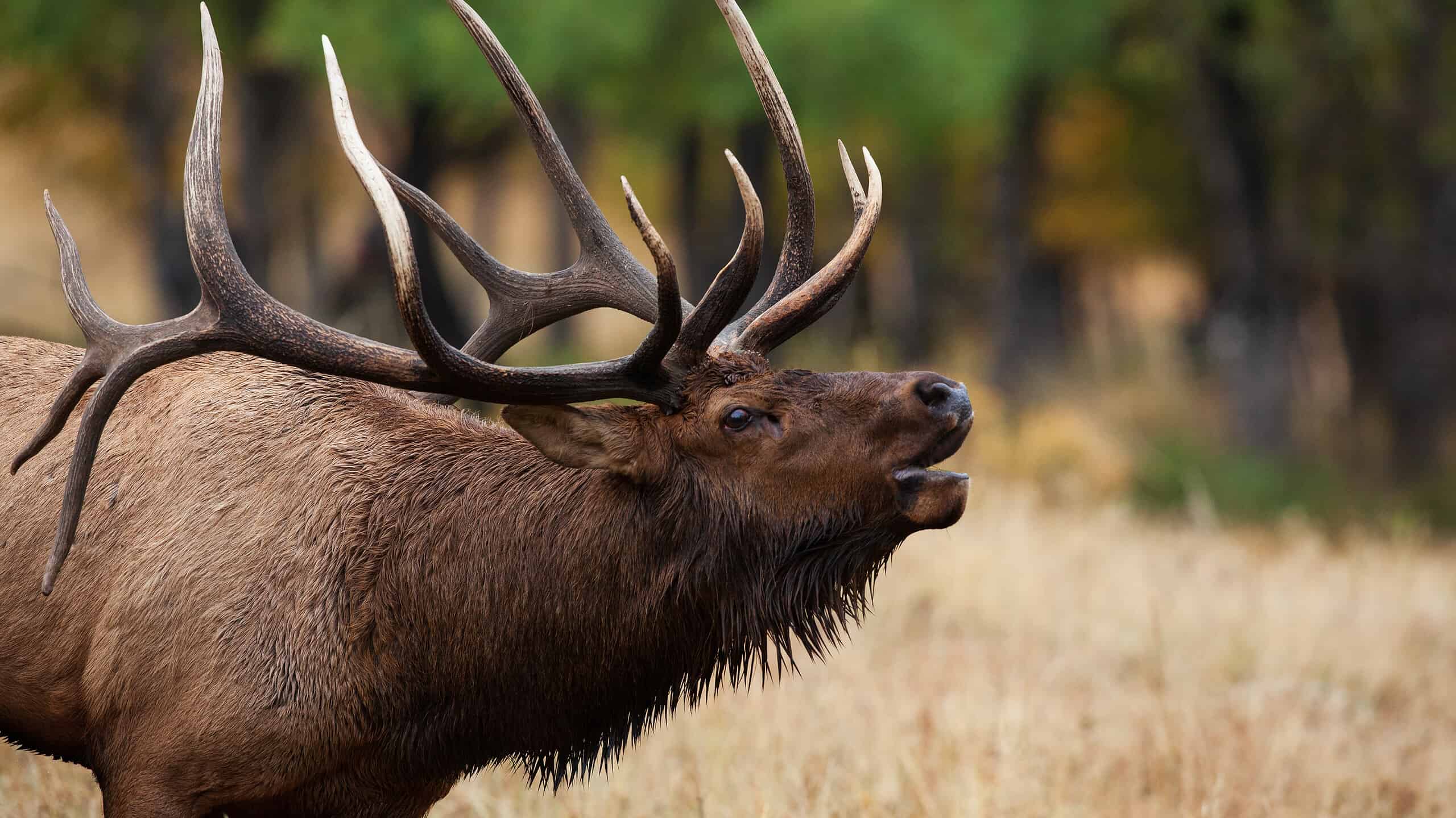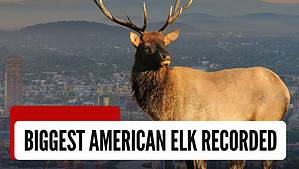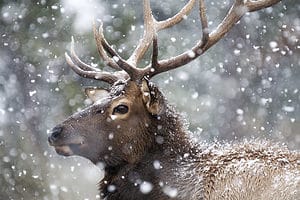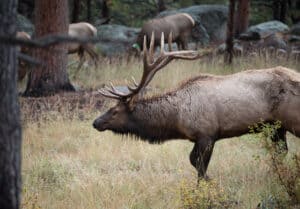American elk are truly magnificent and large animals. They are hard to look away from with their impressive size, antlers, and calm nature. In Virginia, there are a little over 250 elk, meaning they are making a comeback! At one point, they were completely extinct from the state. Although hunting is very limited, a few impressive catches have been recorded here. Follow along to discover the largest American elk ever caught in Virginia.
What Is the Largest American Elk Ever Caught in Virginia?
The largest American elk ever caught in Virginia scored 413-7/8. In 2022, 15-year-old son Austin Prieskorn caught the largest elk in Virginia, the only record in the Boone and Crockett records book. It was completely unexpected as Austin’s father has previously bought raffle tickets thinking he might win a rifle or other object. Instead, while hunting in New Mexico, Austin’s father received a phone call asking if he’d like to go elk hunting in Virginia. This hunt is likely just the first of many as restoration and conservation efforts continue.
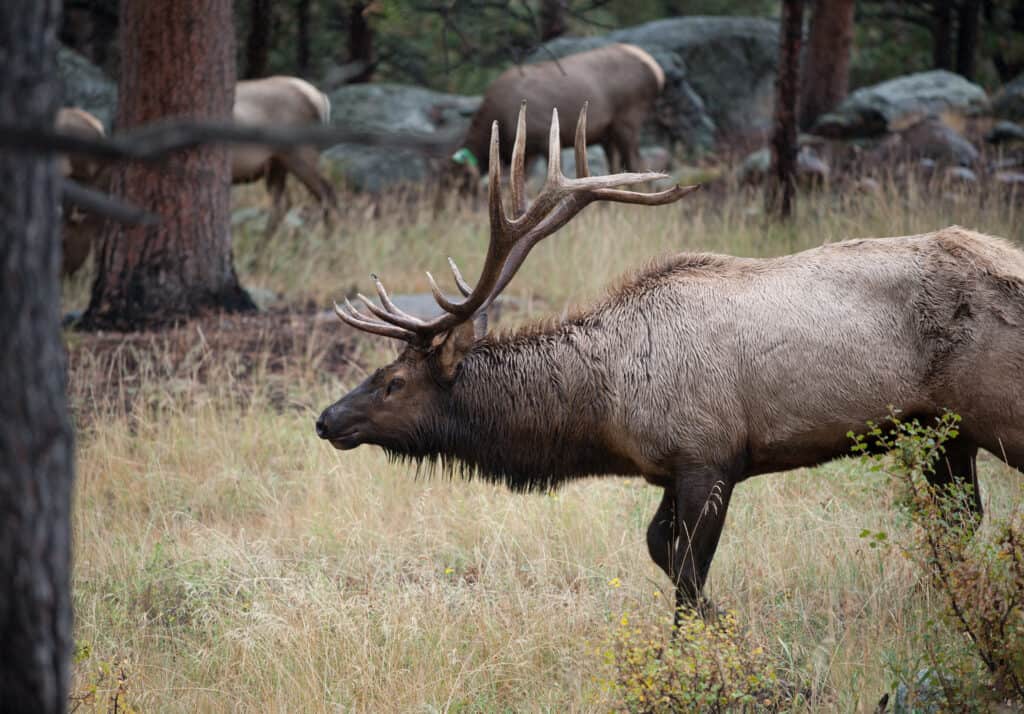
The largest American elk ever caught in Virginia scored 413-7/8.
©Tony Campbell/Shutterstock.com
About American Elk
American elks are the largest animal in the deer family. Currently, there are six North American subspecies of elk and four from Asia. Follow along to learn more about American elk, including their size, habitat, diet, and known predators.
Description and Size
American elk slightly differ in size and appearance depending on the subspecies. However, most American elk have brown-red or grey coats. The coloration varies depending on the season. American elk have thick bodies with slender legs and short tails. They also have large and heavy antlers, that vary in weight. For example, Siberian elk have one of the largest antlers of all the subspecies. The antlers are made of bone and grow about an inch a day. While they grow, the antlers are covered in velvet, which is shed during summer.
American elk have thick coats that keep them warm and protected. Their coats change in thickness and color depending on the season. During summer, they shed their thick winter coats. Their coats in summer are generally reddish-brown. To get rid of excess hair, American elk rub themselves against trees. Their coats during winter are more grey, which helps them stay undetected from predators.
So, how big can American elk get? American elk have a shoulder height of 2 feet and 6 inches to 4 feet and 11 inches. Males are larger than females. They also weigh between 377 to 1,096 pounds. The smallest subspecies is the tulk elk.

There are six subspecies of American elk, two of which are extinct.
©Tom Reichner/Shutterstock.com
Diet
American elk are ruminants, meaning they have four-chambered stomachs. They are grazers that mainly consume vegetation. The exact type of vegetation though depends on the region and the season. During winter, American elk eat dry grass. They may also feed on shrubs, aspen bark, twigs, and willow. However, during summer, American elk have a wider diet. They eat grasses and forbes.
Habitat and Distribution
North American elk mainly live in the Northeastern United States, although there are pockets in some parts of the Central United States. Their range has been extremely limited due to overhunting. In some parts of the country, conservation efforts are underway to increase the population, like in Virginia. Rocky Mountain elk have been introduced to parts of Texas and Oklahoma. The total population of elk in the United States is around 1 to 2 million. In most states, they’ve been extirpated. For example, they are locally extinct in Alabama, Vermont, New Jersey, Connecticut, Indiana, Maine, Maryland, and South Carolina. The largest elk population in North America is Colorado.
American elk live in many different habitats. For instance, they can live in thick forests, prairies, swamp valleys, mountains, aspen parklands, and sagebrush flats.
Predators
Adult American elk have few predators due to their size. However, young and sick American elk are sometimes attacked by bobcats, wolves, coyotes, mountain lions, and black bears.
Other Mammals in Virginia
There are hundreds of mammals in Virginia, not just American elk. Here we have a list of a few you may encounter while visiting and some fun facts about each.
American Beaver
The first mammal on our list is the American beaver. North American beavers are native to North America. They are common in the United States and Canada. North American beavers have been introduced to parts of Europe and South America including Finland. They are very common in Chile and Argentina. During the 1940s, beavers were released into Chile and Argentina. By the 1990s there were at least 100,000 beavers in Tierra del Fuego.
Beavers are best known for their dam-building skills. They create impressive and complex dams for underwater refuge which they use when escaping from predators. North American beavers are herbivorous generalists. They are active at night and forage for woody and herbaceous plants.

North American beavers have been introduced to parts of South America and Europe.
©Frank Fichtmueller/Shutterstock.com
Cotton Mouse
Also in Virginia is the cotton mouse. Cotton mice are small rodents native to the southern United States. They live in woodlands and are very sneaky. You can find them throughout southeastern Virginia, Florida, Texas, and Kentucky. Although previously common in Illinois, it’s not locally extinct. Cotton mice are omnivores. They mainly eat nuts and insects. Cotton mice are dark brown with white feet and bellies. They are about 7.1 inches long and weigh up to 51 grams. Cotton mice are named after their unique usage of raw cotton. They collect raw cotton and use it in their nests.
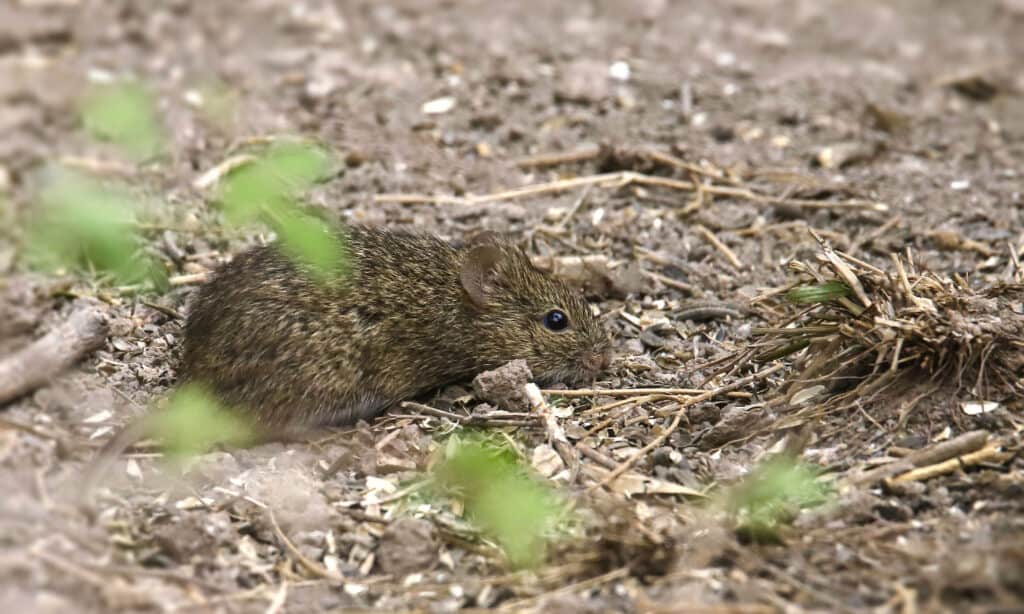
Cotton mice are small brown rodents with white bellies and feet.
©iStock.com/Nancy Strohm
Eastern Cottontail
Another mammal native to Virginia is the eastern cottontail. This rabbit is native to North America, Central America, and a small part of South America. It’s extremely common in North America and is a member of the Leporidae family. On the IUCN Red List, these rabbits are listed as Least Concern. Typically, you can find eastern cottontails in open habitats including meadows and grassy clearings. They are about 14 to 19 inches long and have small tails only about 2.1 inches. The average weight of an eastern cottontail is 2.6 pounds. The size though depends on the region.
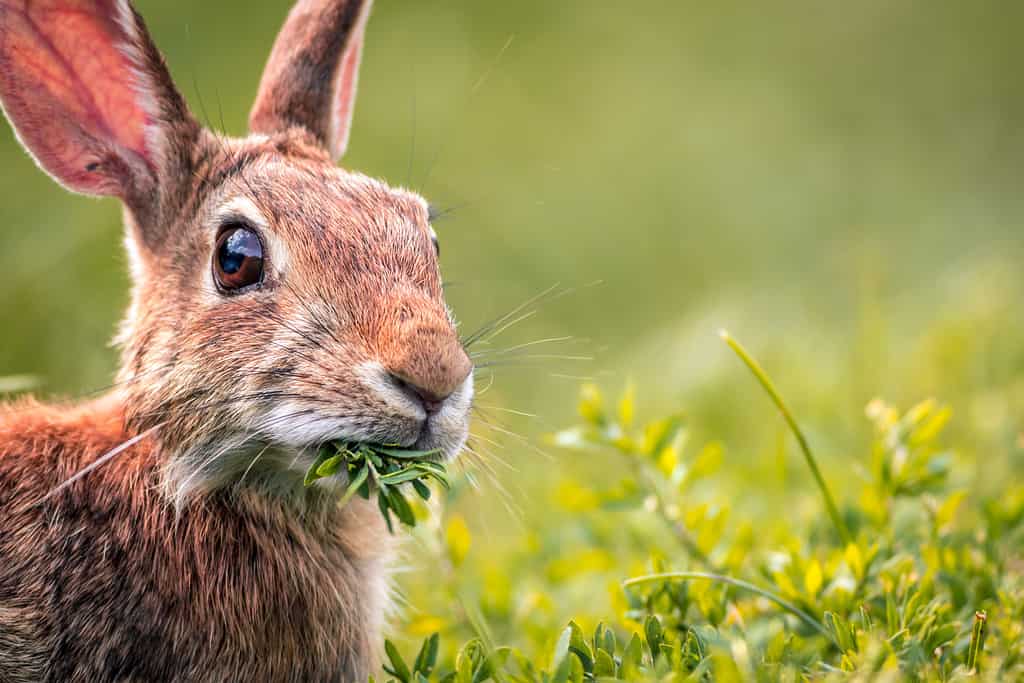
Eastern cottontails are the most common rabbit species in North America.
©Rabbitti/Shutterstock.com
Silver-haired Bat
Next on our list of mammals in Virginia is the silver-haired bat. The silver-haired bat is a migratory vesper bat found in Bermuda, Canada, Mexico, and the United States. They mainly inhabit forests. You can find silver-haired bats as far north as southeastern Alaska and as south as northeastern Mexico. Currently, silver-haired bats are listed as Least Concern on the IUCN Red List. They are best known for their white-tipped hairs.

Silver-haired bats are listed as Least Concern on the IUCN Red List.
©Jay Ondreicka/Shutterstock.com
American Mink
American minks are semi-aquatic mammals native to North America. Although only native to North America, they’ve been introduced throughout Europe, Asia, and South America. Currently, there are about 15 recognized subspecies of American minks, although this number is debated. American minks have short, dense, and soft fur. Their coats change color depending on the season. In winter, an American mink’s coat is very dark blackish-tawny to light-tawny. Their summer coat is shorter and duller.
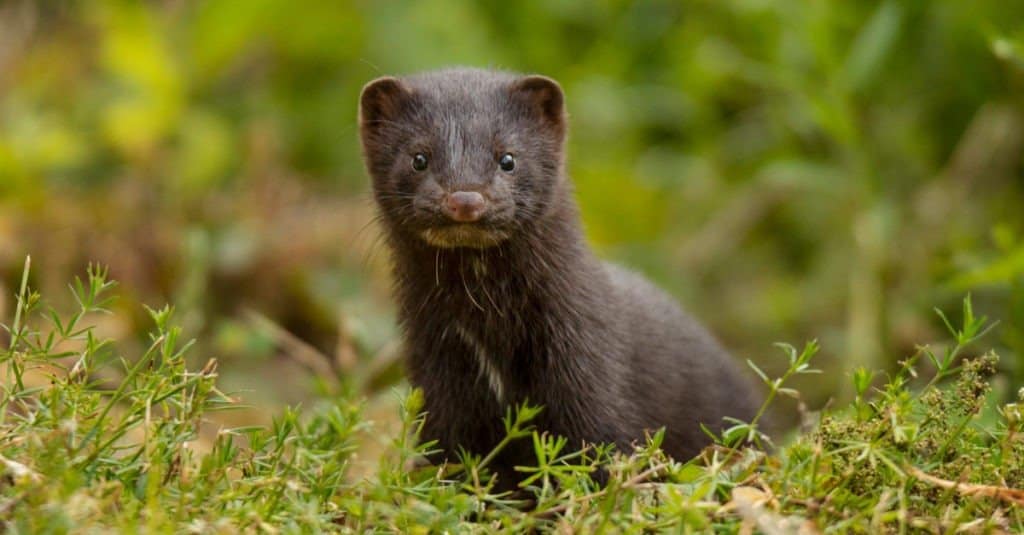
American minks have coats that change color during winter and summer.
©An inspiration/Shutterstock.com
Humpback Whale
Did you know that you can see whales while visiting Virginia? Not all mammals within the state live on land. A common whale species in Virginia is the humpback whale. This massive marine mammal is about 46 to 56 feet long and can weigh up to 44 short tons. These large animals are majestic and best known for their unique body shape and breaching behavior. Humpback whales are also very migratory. In one year, they can swim about 9,900 miles.
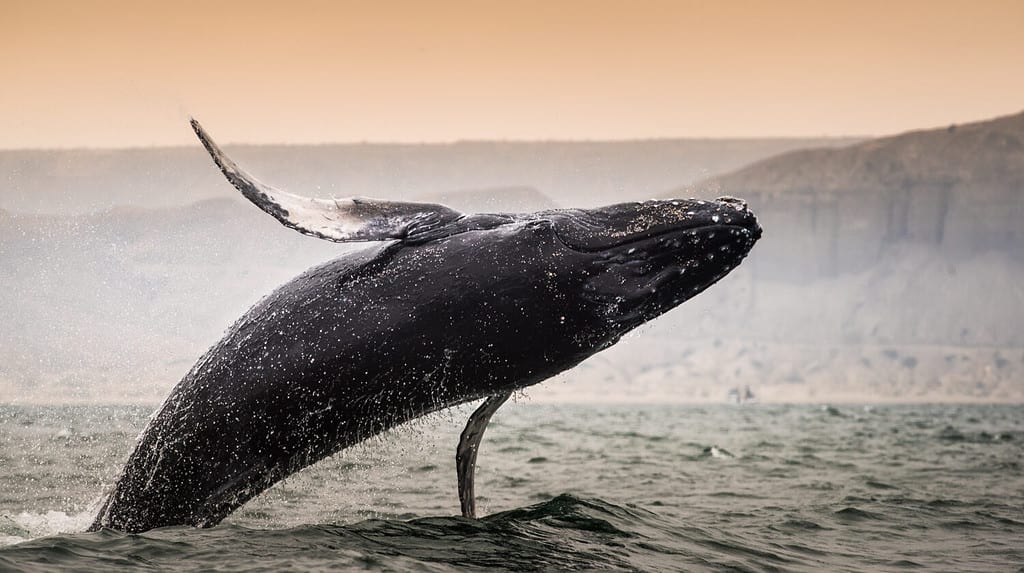
In one year, humpback whales can migrate up to 9,900 miles.
©Christian Vinces/Shutterstock.com
Thank you for reading! Have some feedback for us? Contact the AZ Animals editorial team.

